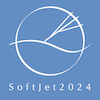Speaker
Description
In hadronic collisions, heavy quarks are produced in hard scattering processes with large momentum transfer, which then generate a parton shower that develops into a jet. In heavy-ion collisions, where quark-gluon plasma (QGP) is produced, heavy quarks interact with the QGP constituents, losing energy which leads to quenching of the produced jets. In this process, the parton shower can be affected, leading to a modification of the fragmentation function. The injection of energy and momentum by the jet into the plasma can modify the medium itself. Theoretical models of partonic interactions with the medium constituents predict that energy loss depends on the quark mass and the color charge of the parton. Heavy quarks are expected to lose less energy than light quarks.
The two-particle angular correlation technique with a heavy-flavor particle trigger allows the study of heavy-flavor jets and their properties. In this contribution, we will present ALICE measurements of heavy-flavor triggered angular correlations with charged particles in pp collisions at $\sqrt{s}=5.02, 13$ and $13.6$ TeV, and in p--Pb collisions at $\sqrt{s_{\rm{NN}}}=5.02$ TeV to study any cold nuclear effects affecting the correlation distribution. Measurements of correlation distribution and per-trigger nuclear modification factor in Pb--Pb collisions at $\sqrt{s_{\rm{NN}}}=5.02$ TeV, used to study jet quenching and other jet-medium interactions, will also be presented.
| Category | Experiment |
|---|---|
| Collaboration | ALICE |
